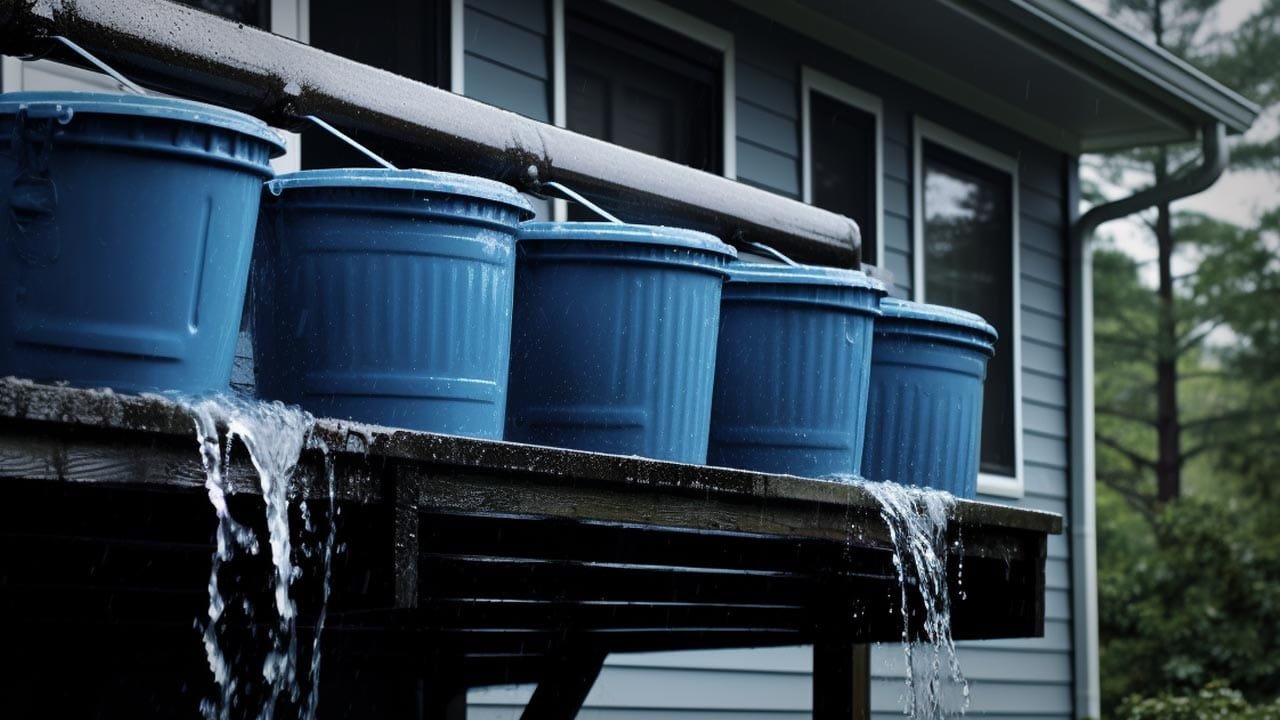Pressurized Rainwater Harvesting and Purification System
Rainwater harvesting isn’t just an ancient practice; it’s a modern-day solution to our ever-growing water needs. The idea is simple yet impactful: collect rainwater, store it, and use it wisely. But when this concept gets a 21st-century makeover, we get the Pressurized Rainwater Harvesting and Purification System. This system is not just about collecting rainwater but doing so efficiently, ensuring it’s safe for use and even consumption.
Key Takeaways
- Pressurized Rainwater Systems offer a sustainable water source.
- They involve advanced purification methods for safe consumption.
- These systems can significantly reduce water bills and environmental impact.
Table of Contents
- Benefits of Rainwater Harvesting
- Setting Up a Pressurized Rainwater Harvesting System
- Importance of Leaf Screens and First-Flush Diverters
- Roof Washers and Storage Tanks
- Pressure Tanks and Pumps: Creating System Pressure
- Treatment and Disinfection of Harvested Rainwater
- Maintaining Water Quality in Rainwater Harvesting Systems
- Potential of Rainwater Harvesting: How Much Water Can Be Captured?
- Legal Aspects of Rainwater Harvesting
- Frequently Asked Questions
- Conclusion
Benefits of Rainwater Harvesting
Harvesting rainwater is like catching nature’s gift in a bucket. It’s free, except for setup and filtration costs. It’s a gentle nod to environmental conservation, making use of water that would otherwise go wasted. Not to mention, rainwater, with its low sodium content, is a boon for those on low-sodium diets. And let’s not forget the practical benefits: reduced water bills and less strain on municipal water supplies. It’s a win-win for you and the planet.
Setting Up a Pressurized Rainwater Harvesting System
You’ll need catchment surfaces, gutters, leaf screens, and more. It’s a DIY project that will leave you feeling accomplished. From reducing flood risks to ensuring a steady water supply during shortages, your system is more than a simple setup; it’s a lifeline in times of need. The catchment surface is where it all begins. This could be your roof, a specially installed surface, or even rain barns for extra capacity. Different materials offer different benefits, but they all serve one purpose: collecting rainwater. Gutters and downspouts are the conduits for your harvested rain. They guide the rainwater from your roof to your storage tanks. Aluminum gutters are a popular choice, being both efficient and health-conscious, steering clear of harmful materials like lead.
Importance of Leaf Screens and First-Flush Diverters
Leaf screens and first-flush diverters are like the guardians of your system. They keep out debris and ensure that the water reaching your storage tanks is as clean as possible. These components are vital for the longevity and efficiency of your system.
Roof Washers and Storage Tanks
Roof washers are the unsung heroes in your system, filtering out the debris for clean water. They work hand-in-hand with storage tanks, the backbone of your system. When choosing a storage tank, consider factors like material, capacity, and placement. Remember, the right tank keeps your water safe and accessible.
Pressure Tanks and Pumps: Creating System Pressure
No gravity-fed system here! Instead, we use pressure tanks and pumps to get that water flowing just right. It’s all about creating sufficient water pressure for your daily needs, be it for irrigation or domestic use. And the best part? Most of these pumps are powered by good old electricity.
Treatment and Disinfection of Harvested Rainwater
Thinking of drinking your harvested rainwater? Then you’ll need to get serious about purification. From basic filtration to advanced disinfection with chlorine and UV light, your goal is to make this water as safe as any bottled or tap water. For an in-depth guide on water purification. It offers valuable insights into making your rainwater not just usable but perfectly safe for all your needs.
Maintaining Water Quality in Rainwater Harvesting Systems
Maintenance is key. Regular checks, cleaning filters, repairing leaks, and ensuring your disinfection equipment is up to par, are all part of the game. It’s not just about having a system; it’s about keeping it in top-notch condition.
Potential of Rainwater Harvesting: How Much Water Can Be Captured?
The sky’s literally the limit here. The amount of water you can capture hinges on your catchment area and the volume of rainfall. But with the right setup, you’re looking at substantial water savings.
Legal Aspects of Rainwater Harvesting
Before you dive in, make sure you’re in the clear legally. Most places support rainwater harvesting, but it’s always wise to check local laws, especially in states with specific regulations like Colorado and Utah.
Frequently Asked Questions
Conclusion
Pressurized Rainwater Harvesting and Purification Systems are more than just a sustainable choice; they’re a smart, cost-effective solution for our water woes. They epitomize the essence of modern conservation efforts, blending efficiency with environmental responsibility.





Leave A Comment